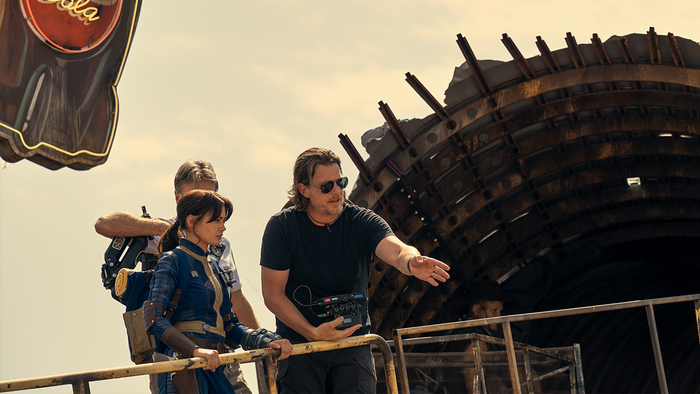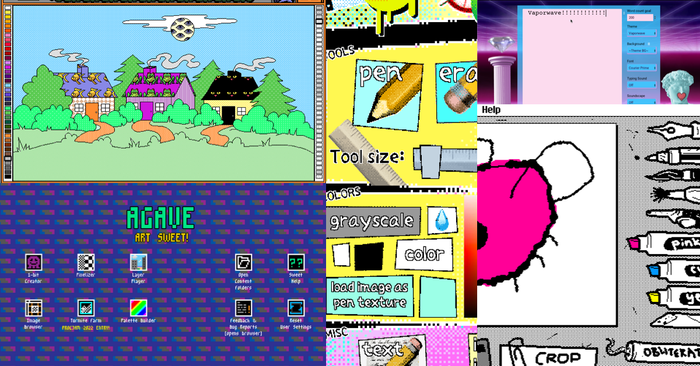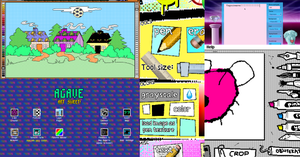Or: how less is more when it comes to music and emotions. NITW uses its soundtrack to create emotions in players in a subtle yet powerful way. Here I'll show some examples and give my opinion on why subtlety is so powerful!

Night in the Woods came out in February of this year. According to the official website “NIGHT IN THE WOODS is an adventure game focused on exploration, story, and character" , which is true, but for me there is one more thing that the game focuses on: feeling. I’m not talking about the feelings of the characters in the game, even though this is an important part of Night in the Woods, I’m talking about the feelings of YOU as the player. During my time with Night in the Woods, I’ve felt a certain emotion more often than any other during my playtime. That emotion is nostalgia. I’ll be trying to shine some light on why this is, and how the music that Alec Holowka created for the game plays a very important role in this!
I’ve played it through once and played it to about the halfway point another two times, and during those playthroughs, there were seemingly random moments where I thought “I remember being here before”. Even during the first time I played through the game, or in places I’ve never been before. How was this achieved? Through the magic of music of course! The soundtrack for Night in the Woods is over 100 tracks long, including some little jingles and stingers. All these tracks mirror the art style and narrative feeling perfectly on a scene-to-scene / level-to-level basis, but they also hide some neat little tricks. I’ll give a few examples and give my thoughts on the use of music and leitmotivs to evoke emotions. There are some light spoilers ahead.
Home Again and Gregg’s Woods
Let me start this one with a little explanation of why these neat musical tricks work so good. Nostalgia is the feeling of wanting to return to a previous period in your life, or remembering past events with a mix of happiness and yearning. At least, that’s how I choose to define it. To evoke nostalgia, you first need to make good memories or associations with something. For these two tracks, Home Again is the track that creates those memories. It’s the track that plays when Mea, the player character, is home in her parent’s house. It’s the safe place where you return every night and start every day, it’s where you find your parents with whom you have fun small talk. Mea’s mom talks to her about the books she’s reading and asks about Mea’s little friends, you can watch TV with Mea’s dad as he tells lame dad jokes. Even if the player rushes through the game, they at least hear these first few notes.
Later in the game, the player gets a chance to go into the woods with Gregg, a good friend. During this sequence, Gregg tells Mea about the trouble he’s been having with self image, and how he has “really up up days and really down down days” .These themes are prevalent throughout the game. Personal issues and the trouble people in their 20’s face are returning themes and issues throughout the game.The music that plays during the scene with Gregg starts with a few really familiar notes…
Recognize those notes? The melody starts with a couple of notes that also make up the melody in Home Again. These three notes are enough to make the player think “wait… that’s familiar, where have I heard that before”. It doesn’t linger long enough that it’s obvious immediately, especially since the player is also reading text and interacting with Gregg at this point. The track sets the mood on it’s own, but it also evokes feelings and emotions the player has associated with Home Again. It parallels the fact that Mea and Gregg have been friends for a long time, and that they have build up a lot of fun and good memories. It also foreshadows later events in the game, where things at home aren't going so good either. Having a small reference to a previous track makes it all the more powerful in my opinion.
Finding Bea and Die anywhere else
Another track that evokes feelings of nostalgia is the track Finding Bea. During a later scene in the game, Mea and Bea, a friend of Mea that has been working at her Father’s hardware store full time since her mother died, go to a party. These parties are the few times that Bea can relax and get away from the pressure of caring for her dad and running a business she doesn’t want to run. Mea screws up Bea’s cover as a student at the party and Bea runs off. This song plays when you run across the rooftops as you try to find Bea again. It’s the climax of the Bea/Mae subplot, and a lot of things come full circle.
The song starts with a bit of a reference to the intro of a song from the very early parts of the game, where the player partakes in a rhythm game/band practice section. This reference is not as obvious as the previous example, but I feel it still gets the point across. This reference has more to do with the chord progression, tone and feeling of the song than using the same notes.
At that point in the story, Mae just got back from dropping out of college, she meets up with her friends again for a bit of an awkward but good time. This mix of emotions, combined with the fact that the player is actively engaged with the music, makes for an even more powerful reference near the end of the game. Just like with Home Again and Gregg’s Woods, a song that plays during a serious and emotional section of the story references a song that plays during a fun or safe part during the story. This is what makes the feeling of nostalgia even stronger. Putting thoughts of a better and more fun time in the player’s head during a section that focuses on more serious issues for the character creates a powerful contrast.
I feel like these small references are a great way of evoking emotions in the player. In general, you don’t want the player to be taken out of experience. For instance, when I hear Groose’s theme in the legend of Zelda, I’m immediately reminded that this character has his own music, that there is a feeling linked to that and that I’m playing a game.
(I bet you can think of a couple of examples yourself too, where you hear a song or melody and think “ah yes, this song, I know what to feel now”)
The way Night in the woods’ soundtrack uses these small references, little hooks and bits sprinkled in songs that are just enough to trigger a response from players, without being so obvious that the player recognizes them, are a great way to deepen the link of the story and game with the music. Just like Left 4 Dead scales it’s difficulty based on how the player is doing without signaling it to the player, I would argue that using leitmotivs and references to other songs in the soundtrack work better when the player isn’t made explicitly aware of it. Getting the player into a state of flow, getting them invested in the story and characters, and forgetting that they are playing a game can be a difficult thing to do, it would be a shame if that was undone by using too obvious musical tricks. Using things like chord progressions, scales and musical ideas to create connections to themes, characters or feelings in the game, you could get the same point across as when you create, for example, multiple renditions of the same song. So in conclusion, what I took away from the soundtrack from Night In the Woods, is that you can be way more subtle and creative with your references and callbacks and still have an effect on the player. I still love leitmotivs, and hearing a character's theme before seeing them on screen is really fun, but having more subtle references can be just as powerful.
Here are some links to reddit threads discussing motfs and other fun musical bits in Night in the Woods if you want more examples of what I've talked about here.
Thread 1
Thread 2
Thanks for reading :) @3xBlast
Read more about:
BlogsAbout the Author(s)
You May Also Like








